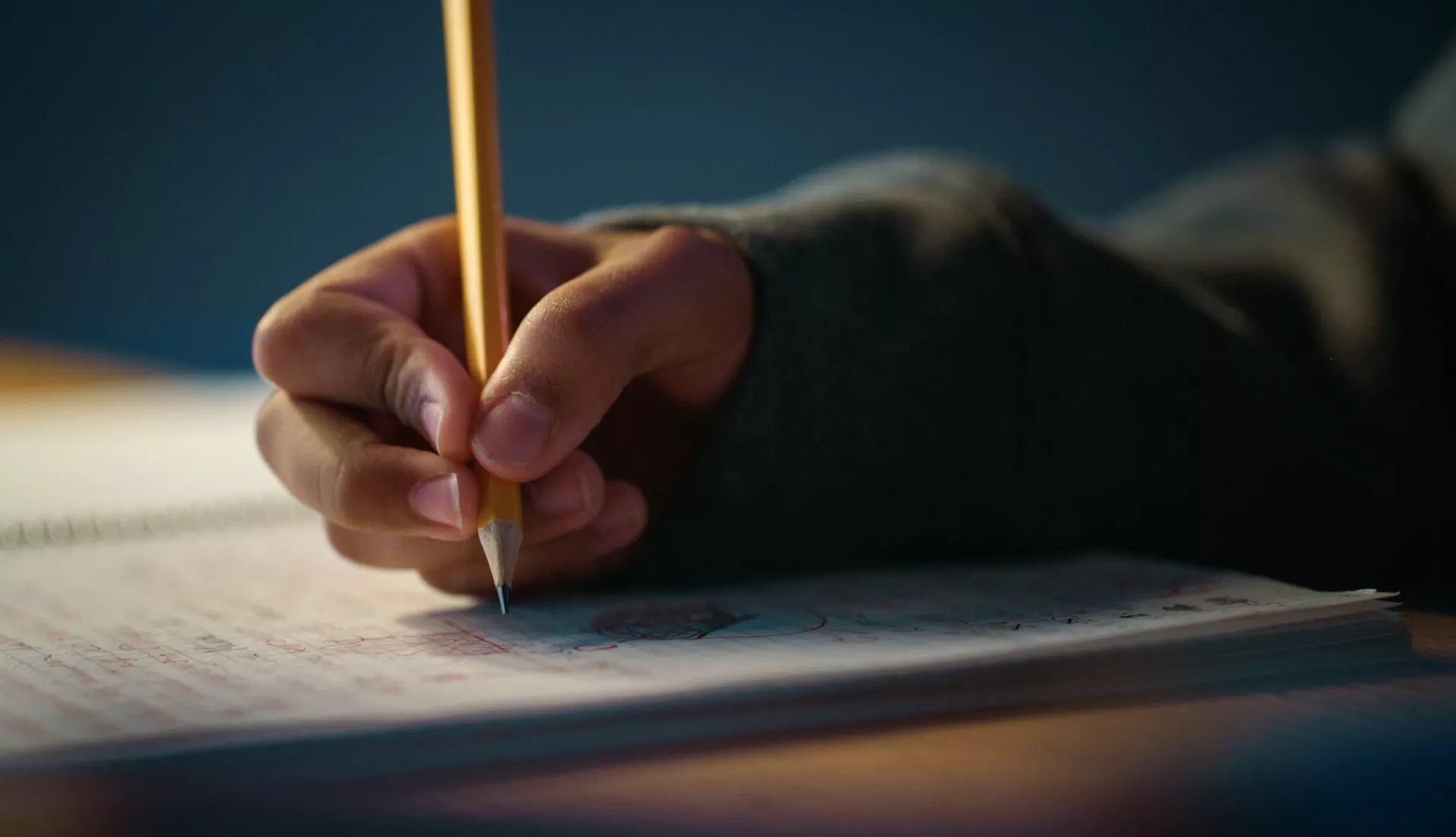Should cursive handwriting go the way of the chisel and stone or quill and parchment, or is the pen is still mightier than the keyboard?
On team cursive, advocates point to the many studies that have shown that learning cursive not only improves retention and comprehension, it engages the brain on a deep level as students learn to join letters in a continuous flow. It also enhances fine motor dexterity and gives children a better idea of how words work in combination.
Team keyboarding say the curriculum is already packed and learning cursive is less important in an increasingly digital world.
Some research indicates there could be a middle ground. Imagine a college lecture hall where some students are taking notes on laptops while others are taking them longhand. Whose notes are better?
Researchers have found that laptop users take more notes, sometimes recording every word from the lecturer, while the longhand note-takers were slower and had to paraphrase while translating speech to paper. However, the process of transcribing enabled them to recall more of the information than the laptop note-takers.
Enter handwriting recognition apps, combining cursive with digital text. These apps, like Google Handwriting Input, Pen to Print, or WritePad for iPad, are able to scan and digitize handwritten notes.
There are currently 21 states that require cursive in public school curriculum, but the debate about keyboarding versus cursive rages on. NEA Today asked our Facebook followers what they think. Among these educators, we found members of Team Cursive, Team Keyboarding, as well as Team "Both." Here’s what they had to say.
Judy Lee Walker
Kids can barely print. I love cursive, but we need to get the basic concepts of writing down first, such as capitals, punctuation, writing in a straight line. I'm seeing poor writing skills in fourth through eighth grade.
Julia Miller
Cursive is like calligraphy--good to teach in art class, harmful to force for all assignments.
Debbie McCleskey Baker
Some benefits of cursive: 1) it trains the brain to learn functional specialization, 2) it improves memory, 3) it improves fine motors skills, meaning that students who have illegible print, often have legible cursive handwriting .
Valerie Rose Carey
Both.
It's not about what will be "useful" for us in later life. Writing in cursive aids in brain development and primes the brain for increased learning.
Liz Brady Meehan
Uh... both? I learned both in elementary school in the '90s. And I feel it's important to at least be able to read cursive. I rarely personally write in cursive, but I definitely wouldn't like being unable to read it.
DeeAynn Durbin
I'm Team Both. Kids need to learn how to print properly, then write in cursive. They also need to learn how to properly type on a keyboard. I teach middle school and most kids don't know how to print properly, they don't know cursive at all and they hunt and peck to type on their Chromebooks/computers. We are not teaching basic skills any more and we need to.
Michelle P Williamson
It should be an enrichment not a requirement. It will never be needed in life, except for a signature, and those will all be electronic before long.
Kate Pagel
They need both. But, if they don't learn to spell, whether they type or write, their ability to communicate is adversely impacted.
Brandon Gabriel Abraham
We can do both. Also, we, as teachers, can demand a more robust conversation than this silly either/or(where the “typing side” represents new thinking, and the “cursive side” represents the old guard). For all we know, keyboards and laptops probably aren’t going to be around, say, 15 years from now(voice recognition is only going to get better). So let’s do both.
Ellie Zimmerman
I taught it for last 4 years in 3rd grade at my school, kiddos love learning it! We even then sent letters to nursing homes as pen pals during the pandemic, in cursive! They totally got a kick out of getting letters back written the same way
Jason Zobl-Tar
Cursive is outdated. Typing is a current skill that students need. There is only so much time in the school day.
Most documents are signed online now, which even further makes the point that new skills are necessary for our students to be productive in this century.
Plus, have you seen most people’s legal signatures? Many are illegible and a mix of cursive / manuscript / personal style. Proper cursive instruction is no longer necessary.
Cheri Cahill
Cursive is more than just a way to write. It strengthens the cross hemi-sphere connections in the brain. Helps students later with problem solving and abstract thinking. As a math teacher I think students should learn cursive to help their brains develop those connections needed later in life.


